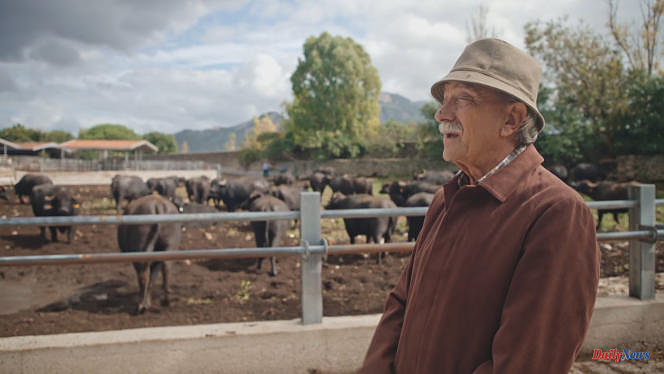There was a time, not so long ago, when the French knew neither Japanese sushi nor Italian mozzarella. The latter has nevertheless become a regular guest at our tables, fresh or, more readily, melted on pizzas. It can be found in supermarkets, in various forms, at various prices, as explained by Mathieu Barrère's Mozzarella, a Vast Buffalo Factory?.
The title of the documentary announces the color: few products sold by large retailers meet the requirements of a mozzarella made according to the rules of the art. To obtain the Denomination of Protected Origin label (DOP, equivalent of AOP in France), three rules must be respected: be made from buffalo milk (the pun of the title lights up), be shaped hand and in the region of Campania, in the south-west of Italy.
The cow's milk version, the most common, is not subject to DOP and its price per kilo can be four times lower than that of buffalo milk mozzarella. And there are sausages or blocks of industrial mozzarella, dry-packed, used for their "stringy" qualities and not for their taste, as the manager of a fully robotized Belgian factory puts it.
The "stretchability" of this substitute - to which are added citric acid, stabilizers, thickeners - is important, as demonstrated by an employee: average of 30 centimeters, but it can go up to... 1 meter, quality very appreciated in the field of pizza. As the voice-over commentary puts it, this product ends up being "the plasticine of the food industry"...
Vegetable substitute
Michelin-starred chef Thierry Marx finds the taste of mozzarella quite flat (debatable), but adds that it "provides pleasure through its texture". And to reinvent it, facing the camera, in the light of molecular cuisine, by melting it before siphoning it in order to destructure-restructure a tomato-mozzarella in a sphere of tomato water frozen with liquid nitrogen and sprinkled with seed powder…
The film stops on an Italian production of black mozzarella, colored with vegetable charcoal (supposed to be more digestible), and on a vegetable ersatz proposed by a French "responsible cooking" workshop, made from fermented cashew nut milk , thickened, whipped like a kind of béchamel and cooled in a bath of ice cubes.
Instructive, the documentary is however incomplete: nothing is said about high quality artisanal productions as we find even in France. The magazine "Très très bon" of April 18, 2021, on Paris Première, had dedicated a special issue made in France to them with tasting by specialists, including the indispensable Alessandra Pierini.












